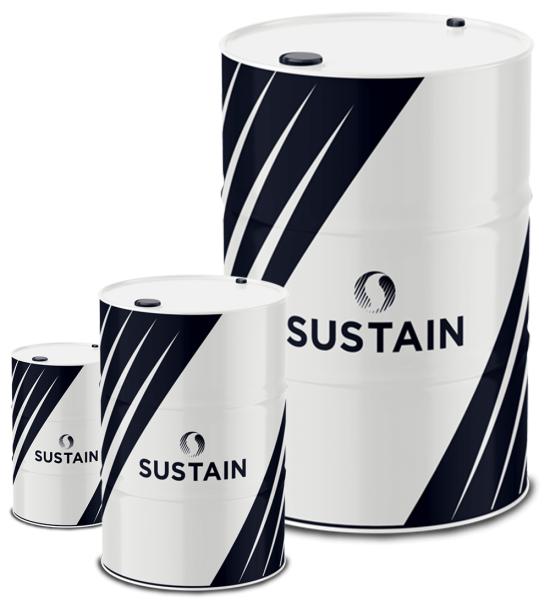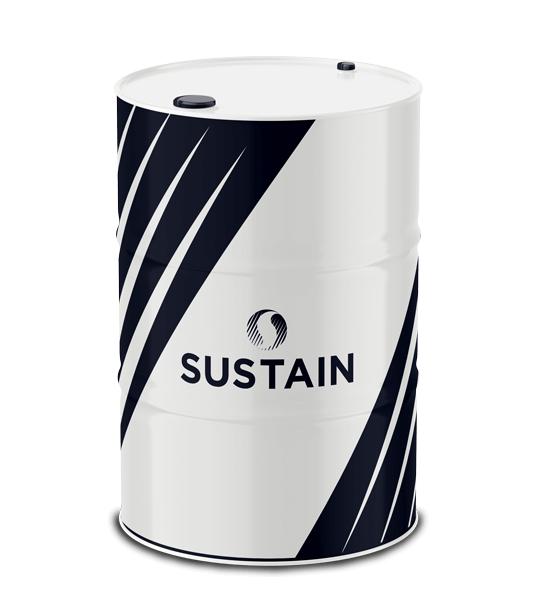Drive change, whatever you drive. IT CONTAINS 100% SUSTAINABLE CONTENT. only by sustain.

FUEL SPECIFICATION

67 CETANE NUMBER

0.816kg/L DENSITY (SG)
Density: Fuel density, the weight per volume, affects how much energy your fuel delivers. Moderately high density is better, as it can provide more energy for better power and mileage, but overly dense fuel may strain systems.

<0.1% FAME CONTENT

<1.0 PCA% (PolyCyclicAromatics)
PCA: Polycyclic Aromatic Hydrocarbons (PAHs) are harmful chemicals in fuels that can form deposits or increase exhaust emissions, sometimes regulated in motorsport. Lower PAH levels are better for ensuring cleaner combustion and reducing engine buildup, which could reduce power.

< -10oC CFPP (Cold Filter Plugging Point)
SUSTAINABILITY CREDENTIALS
TYPE OF SUSTAINABLE FUEL – BIOFUEL
100%
SUSTAINABILITY
100%
SUSTAINABLE COMPONENTS
Sustainable components: Components within the fuel that derive from renewable sources, like agricultural waste (e.g., straw) and forestry waste (e.g., wood pulp) to reduce environmental harm. They are sourced from suppliers upholding rigorous socio-economic standards, including fair labour practices and ethical conduct.
0%
FOSSIL CHEMISTRY
Fossil chemistry: Components within the fuel that derive from non-renewable ancient organic matter that often contains high energy density, which is great for maximum power and speed, but not as good for the environment due to releasing carbon into the atmosphere that was locked away.
0%
MASS BALANCED CONTENT
Mass Balanced Fuels: Mass balancing can be used to certify a fuel as 100% fossil-free when, in reality, the product you receive may have carbon molecules in it that are not renewable. The process involves carefully tracking the volume of renewable materials introduced into the system. These renewable inputs are then allocated to specific fuels, allowing manufacturers to claim a portion of the final product as renewable, even if the physical fuel contains a mix of fossil and renewable molecules. This approach does not guarantee that the fuel delivered to the end user is entirely fossil-free, but it ensures that an equivalent amount of renewable fuel has been introduced into the supply chain, effectively displacing fossil fuel use.
In simple terms, manufacturers can integrate fossil and renewable feedstocks within the same production system by utilising existing refining and distribution infrastructure to maximise efficiency and minimise costs.
By keeping track of the quantities of renewable content and then allocating that amount to certain products, you can gain verification of the content through third parties, such as the International Sustainability and Carbon Certification (ISCC) chain of custody mass balance system, audit and verify that the renewable content claimed aligns with the actual renewable inputs.
This is similar to the concept of green electricity tariffs. You may pay for a green tariff, but that doesn’t mean the electricity coming through your sockets is any greener than that of your neighbour on a standard tariff. This means that we keep score of how many green electricity units have gone into to the grid and these are allocated to users according to their tariff. We just have to make sure the scores tally up at the end.
85%
GHG SAVINGS
470 gCO2e/L
CARBON INTENSITY PER LITRE
POWERED BY SUSTAIN RACING

EN590

FUEL IN ACTION
See the range of vehicles already running on the SUSTAIN RACING Diesel 100 fuel.

DISCOVERY 36QB
1998
1 year using sustain
WHERE TO
FUEL UP?
View Fuel Locations







